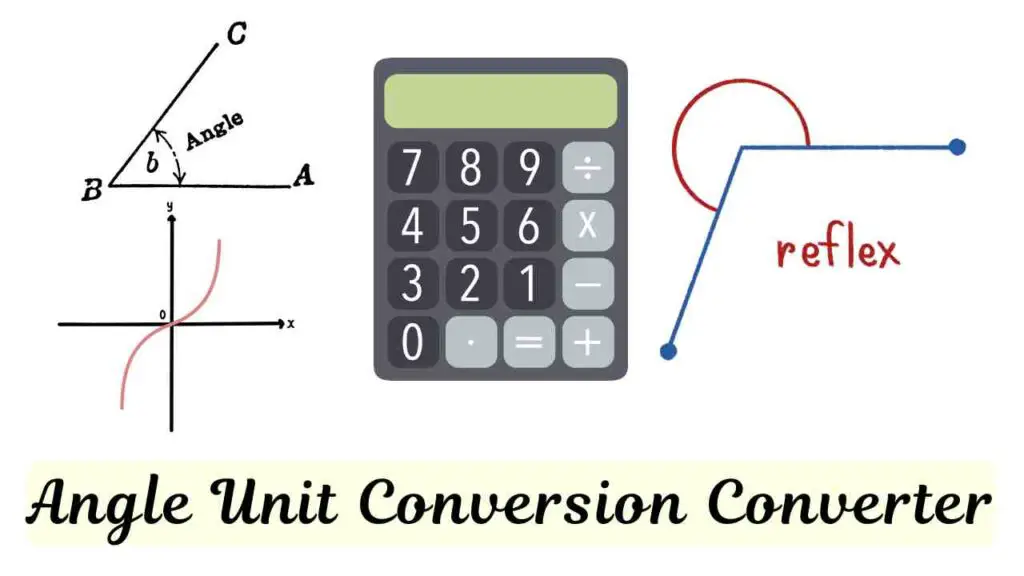Angles are fundamental to countless fields, from geometry and trigonometry to engineering, physics, and navigation. Whether you’re designing a structure, calculating trajectories, or programming a robot, understanding and converting between angle units is essential. However, switching between degrees, radians, gradians, and other units can be tricky without the right tools.
To simplify this process, we’ve developed a free, intuitive online Angle Unit Conversion Calculator that allows you to convert between any angle units instantly. In this blog post, we’ll explore why angle conversions matter, common scenarios where they’re needed, and how this calculator can help you work smarter.
Angles Unit Conversion Calculator
Table of Contents
Angles measure the amount of rotation between two intersecting lines or planes. They are expressed in various units depending on the context, including:
- Degrees (°) : The most commonly used unit, dividing a circle into 360 equal parts.
- Radians (rad) : Preferred in mathematics and physics because of its relationship with the radius of a circle.
- Gradians (grad) : Used in surveying and some engineering applications, dividing a circle into 400 equal parts.
- Milliradians (mrad) : Common in ballistics and long-range targeting.
- Minutes ('') and Seconds ("") : Subdivisions of degrees, often used in navigation and astronomy.
- Revolutions (rev) : Representing one full rotation around a circle.
Each unit serves a specific purpose, and converting between them ensures consistency and accuracy in calculations.
Why Convert Angle Units?
Converting between angle units is crucial for several reasons:
- Cross-Disciplinary Work : Different fields use different units. For example, engineers might work in degrees, while mathematicians prefer radians.
- Precision in Calculations : High-precision applications, such as aerospace or robotics, often require angles in radians for accurate trigonometric computations.
- Compatibility : When integrating systems or tools that use different units, conversions ensure seamless operation.
- Education and Research : Students and researchers often need to compare data across multiple scales, making unit conversions indispensable.
- Real-World Applications : From architectural blueprints to GPS navigation, angle conversions play a vital role in countless industries.
Introducing the Angle Unit Conversion Calculator
To simplify the process of converting angle units, we’ve developed a free, easy-to-use online Angle Unit Conversion Calculator . This tool allows you to convert between any two units instantly while also providing a comprehensive list of all possible conversions for your input value.
How It Works
- Enter the Value : Input the numerical value you want to convert.
- Select "From" and "To" Units : Choose the unit you’re converting from (e.g., Degrees) and the unit you’re converting to (e.g., Radians).
- Click "Convert" : The calculator will display the converted result for your selected "to" unit.
- View All Conversions : Below the main result, you’ll find a grid showing the equivalent values in all supported units, giving you a complete overview.
Example Conversion
Let’s say you have an angle of 90 Degrees (°) and need to determine its value in Radians:
- Enter
90in the input field. - Select "Degrees (°)" as the "from" unit and "Radians (rad)" as the "to" unit.
- Click "Convert."
The calculator will show:
- Main Result :
90 Degrees (°) = 1.570796 Radians (rad) - All Results Grid : Degrees (°): 90Radians (rad): 1.570796Gradians (grad): 100Milliradians (mrad): 1570.796327Minutes (''): 5400Seconds (""): 324000Revolutions (rev): 0.25
This instant overview saves time and ensures accuracy in your calculations.
Key Features of the Calculator

- Dynamic Dropdowns : Automatically populated with all supported units for quick selection.
- Responsive Design : Works seamlessly on desktops, tablets, and mobile devices.
- Scientific Precision : Handles large and small numbers with ease, displaying results in either standard or scientific notation.
- Comprehensive Results : Provides not just the specific conversion but also a full breakdown of all equivalent values.
- User-Friendly Interface : Clean, intuitive design with hover effects for better readability.
Practical Applications of the Calculator
Here are some real-world scenarios where this calculator can be invaluable:
- Engineering : Convert angles from degrees to radians when working with mechanical designs or simulations.
- Physics : Switch between radians and revolutions when studying rotational motion or angular velocity.
- Navigation : Translate degrees, minutes, and seconds into decimal degrees for GPS coordinates.
- Surveying : Use gradians or milliradians for precise land measurements and mapping.
- Education : Help students understand the relationships between different angle units through hands-on exploration.
Tips for Using the Calculator Effectively
- Double-Check Inputs : Ensure the value and units you enter are correct to avoid errors.
- Understand Context : Know which unit is most appropriate for your application before performing conversions.
- Explore All Results : Use the "All Results" grid to gain insights into how different units compare.
- Bookmark the Tool : Save the calculator link for quick access whenever you need it.
Conclusion
Understanding angle units and their conversions is a critical skill in many fields, from engineering to astronomy. With our Angle Unit Conversion Calculator , you can streamline this process and focus on what truly matters—your work. Whether you’re designing structures, navigating maps, or solving complex trigonometric problems, this tool empowers you to handle angle conversions with confidence and precision.